
Street Wise Boulder is back, Sept. 7-13, for its second year, bringing muralists (and 3D artists) from around Colorado and as far away as New York to paint engaging works in public spaces around the city.
With a bit of help, Leah Brenner Clack, executive director of Street Wise, had the unenviable challenge of choosing 35 artists from the more than 250 who applied. For some, this will be their first commissioned street art project. For others, their hundredth. But each artist comes with a desire to unite communities, facilitate difficult conversations and give voice to forgotten (or untold) narratives. We thought it best to let the artists speak for themselves.
Below are Q&As with some of the participating artists. Responses have been edited for length and clarity.
Ally Grimm (aka A.L. Grime)
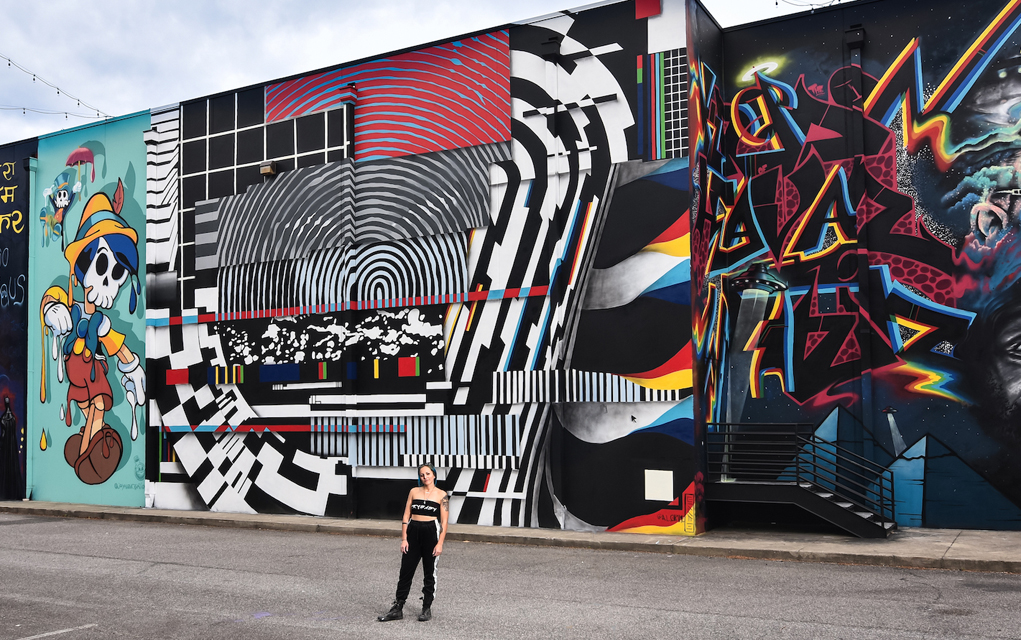
How did you get into large-scale mural work?
Last summer, I took a road trip with my friend Anna Charney to California. On that trip I got to watch her paint a wall for the Container Yard, and then the rest of that summer she let me hop in and help her on a project so I could adjust to painting large. Anna, if you’re reading this, I wouldn’t be here without you, girl! Thanks for the lessons, the dance parties and the continued support on this journey!
What’s your goal with your public artwork?
My goal with public artwork is to inspire the artists of tomorrow. My main mission as an artist is to empower young women by setting an example of success through diligence and hard work. I touch on issues of women’s empowerment, rape culture, the power of the people and equality because I feel these are the biggest issues we are facing today. I hope that we can use street art to normalize empathy and encourage more people to act with love.
What do you think public art does for a community?
Public art allows us to bring art to the people. While I appreciate the gallery world, this framework only reaches a privileged audience. Art is for everyone. Art should be everywhere. When we are able to paint the streets, we are able to inspire and bring joy to all people regardless of their age, background, education and income level.
What artists do you have your eye on right now?
On a global level, Georgia Hill, Bierenbrood, Joshua Mays, Smithe, Demsky and Jay Caes. Locally, I think you should look out for Just, Johnny Draco, Jodie Herrera (chromaj), Casey Kawaguchi, Whitney Holdburn, and my girl Anna Charney.
Danielle DeRoberts (aka Onerary)
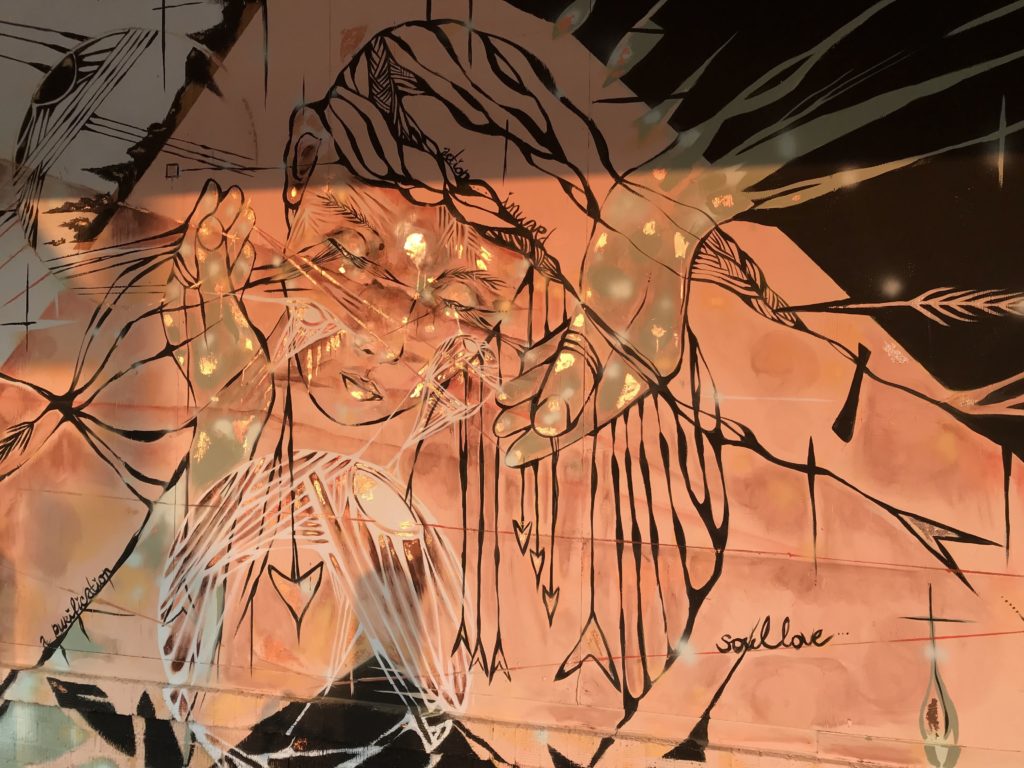
How did you get into large-scale mural work?
My first outdoor/public mural was during my travels in India in 2006. It was organic, engaging and transformative within the moment. It wasn’t until last year that I finally rediscovered myself and my capabilities and the connection outside galleries and into everyday communities, which reminded me of that time in India. I was given the opportunity to revisit this full creative expression when I was accepted into the Fort Collins Mural Project last summer. It was life-changing, and a way back to myself, what and who I want to reach through public art.
What’s your goal with your public artwork?
To invoke emotion, to include not exclude. To bring healing visual messages to all. Raising awareness to create transformative change within ourselves, each other, the planet and humanity.
What do you think public art does for a community?
I believe public art brings expressive messages and unity to communities, for anyone to be exposed to. A space that welcomes the stimulation of dialogue open to all, and encourages the long-term prosperity of the social and natural environments in which we live. As Street Wise states, Art heals…
What artists do you have your eye on right now?
I truly love collaborations between different artists working and creating together. The recent Babe Walls mural festival in Westminster was innovating and amazing to see. Collaborations are extremely powerful, and this one proved so.
Grace Gutierrez

How did you get into large-scale mural work?
The first mural experience I had was from a college class creating collaborative community murals. It was an amazing experience because the murals we did were for organizations that really support their communities. Street Wise is the first time I will be painting a mural by myself. I am excited and grateful to begin a journey into more large-scale mural work.
What’s your goal with your public artwork?
As a Colorado native I have seen so much change in this state. I have witnessed the displacement of Chicanx/Latinx/Indigenous families and businesses. I hope my work will emphasize our presence and make a statement that we are here to stay while also celebrating the influence we have had on local communities. By referencing my Chicana identity and pride for my Chicanx heritage, I want to normalize public and communal pride for my culture and show the beauty of our stories and traditions. Specifically with this mural for Street Wise, I am exploring animal and feminine connection to the earth and preservation.
What do you think public art does for a community?
Public art has a special way of creating conversations and connections between members of a community. Sometimes it can be difficult to have conversations about racism, gentrification, cultural identity and social rights issues, but public art allows its viewers to contemplate these things. Murals have messages tucked away in them and when people see something daily, those messages slowly reveal themselves. Their importance to the community slowly reveals itself as well.
What artists do you have your eye on right now?
Locally, I really love the work of Danielle DeRoberts, one of the other artists participating in Street Wise Boulder. Her linework and metallic embellishments make for truly unique artworks, and everything is so expressive and full life. I feel honored to be included in a lineup with her! I also love the work of Eva Bracamontes, a Mexican artist exploring cultural identity. Her work has all of my favorite things: references to folklore, animals, bright colors and the celebration of feminine power.
Katy Casper

How did you get into large-scale mural work?
I loved going to school for architecture, but after graduation, I came to realize that office work was not a good fit for me. I tried to mix things up by organizing office volunteer projects. One of the times we worked on prepping some shipping containers for an artist to paint murals on and it turned out that I knew the muralist, Bobby Magee Lopez. We had met through friends of friends several years earlier and not too long after our reconnection, Bobby brought me under his wing and taught me how to do murals. Soon after that, in 2012, I left architecture to pursue art full-time. Bobby and I have been working together on mural projects ever since.
What’s your goal with your public artwork?
I am an artist and a permaculturist. My mission is to cultivate joy and vitality by connecting people to each other and to the land where we live, work and play. Ultimately, though my pieces are generally bright and cheerful, I am angry and sad that we are causing mass extinctions. I want people to wake up to the fact that there is a choice that must be made: as humans we are blessed and cursed with the decision to either be a creator and protector of life, or a destroyer and that not making a conscious choice, by default, makes us a destroyer.
What do you think public art does for a community?
Public art brings light, life, color, wonder and new perspectives to a community. It can be a nice addition to an area that is already pleasant, but it also has the power to transform spaces and lives.
What artists do you have your eye on right now?
Some artists I love for their message, like Mona Caron with her murals of urban weeds, and some I love simply for their bright and geometric aesthetic, like Okuda San Miguel and Jessie & Katey. Local artists whose work I admire greatly are Pher01, Jaime Molina & Pedro Barrios and Ladies Fancywork Society.
Latasha Dunston
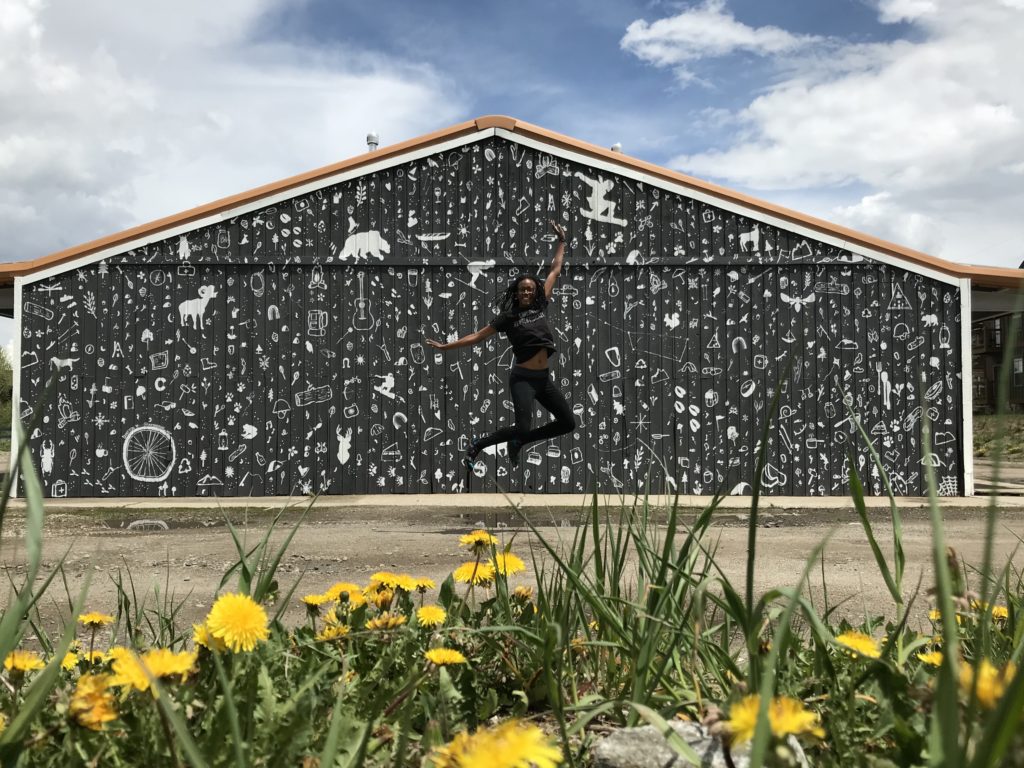
How did you get into large-scale mural work?
I had a really dope mentor, Hamilton Glass, when I was in art school. He showed me the hard work and discipline you have to have to be a mural painter. I worked under him for about three years and it was a blast. I knew I wanted to do it on my own.
What’s your goal with your public artwork?
Simply put, to spark joy and evoke conversation.
What do you think public art does for a community?
Public art allows artists to express themselves and reflect the current history. It brings beauty and personality to a neighborhood and makes the space feel more pleasant and welcoming.
What artists do you have your eye on right now?
I’m loving Lauren Pearce of LadyNoelDesigns. She is a Black painter based in Ohio. Beautiful colors and shapes fill her work and she highlights the black figure so well. She has been putting up murals on the East Coast and I can’t wait to see one in person.
Kailey Geary

How did you get into large-scale mural work?
In college I studied architecture. My first job out of college was with Urban Outfitters as a visual display artist. There, I was entrusted with the task of painting the break room. Because I had so much creative freedom with this, I felt compelled to do something spectacular. This was my first mural opportunity and I was inspired by the nature of Colorado and the Denver skyline.
What’s your goal with your public artwork?
I am a firm believer that all art has the potential to be harnessed and observed in therapeutic ways. I strive to provoke feelings of joy and positivity. I aim to kindle the imagination and add vibrancy to the ordinary.
What do you think public art does for a community?
Public art has the ability to improve the quality of life for the communities where it resides. It often increases community togetherness. It gives a sense of place and identity. It has the potential to express messages and even encourage activism. It supports creative outlets for citizens and youth — and allows space to amplify the personality of the city, town or neighborhood where it is displayed.
What artists do you have your eye on right now?
Some artists I am really admiring at the moment include: Chamareli, Smitheone, Kent Baltutat, Michael Divine and Carlos Hartazago.
Marka27 (aka Victor Quinonez)
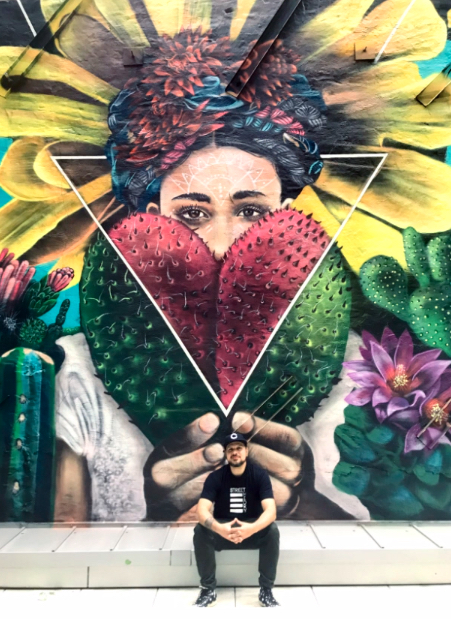
How did you get into large-scale mural work?
I started as a youth painting graffiti but was also exposed to Mexican muralists like Diego, Orozco, Siqueiros. My connection to my Mexican roots and culture combined with my exposure to graffiti is a major reason why I paint now.
What’s your goal with your public artwork?
I want to inspire people. Most importantly I want to inspire people who question identity and self-worth. I’m a Mexican-born artist who grew up in the U.S. and have seen what colonization has done to Black and Latin people. With my work I want to remind everyone how beautiful and important our culture, heritage and physical appearance is with a decolonized eye. I believe public art can empower and bring communities together.
What do you think public art does for a community?
It gives community pride. It also inspires future generations to express themselves. It creates a space and moment that did not exist before. A blank wall in a parking lot all of a sudden becomes a space for social gathering and activation because now there’s a major work of art that sets the tone and creates the energy and atmosphere that wasn’t there before.
What artists do you have your eye on right now?
My 10-year-old daughter Luna and 16-year-old Reina. They truly inspire me to be more creative and free. They are very thoughtful and expressive with the artwork they create and don’t take it too seriously.
Olive Moya

How did you get into large-scale mural work?
I got interested in murals in art school as a response to learning how exclusive the art world was. While exploring transportable murals, I saw how public work could reach people in a way that art in galleries and museums often couldn’t. Artists make things to communicate a message or provide an opinion on a subject that’s important to them. I love the idea of bringing that to people where they’re at; to have the space to consider the work in a non-pressure situation or over time is unique.
What’s your goal with your public artwork?
I’ve made a lot of pieces that can serve as something for people to feel ownership over, almost like how we attach ourselves to songs and call them ours. But recently I’ve been exploring themes of “place” in my studio work, and have started incorporating that into my murals. These pieces intend for the audience to consider the history of each place — who existed there, what they created there, what the place meant to them, and, unfortunately in many moments in our history, how they were forced out of that place.
What do you think public art does for a community?
I think public art can help a community feel pride and ownership over their space. However, I think as artists we have to be careful and thoughtful about how we create, where we create and what messages we put out there. We have to consider what the community wants and needs, and how we can add something without our work being a contributing factor to displacement.
Robert Martin
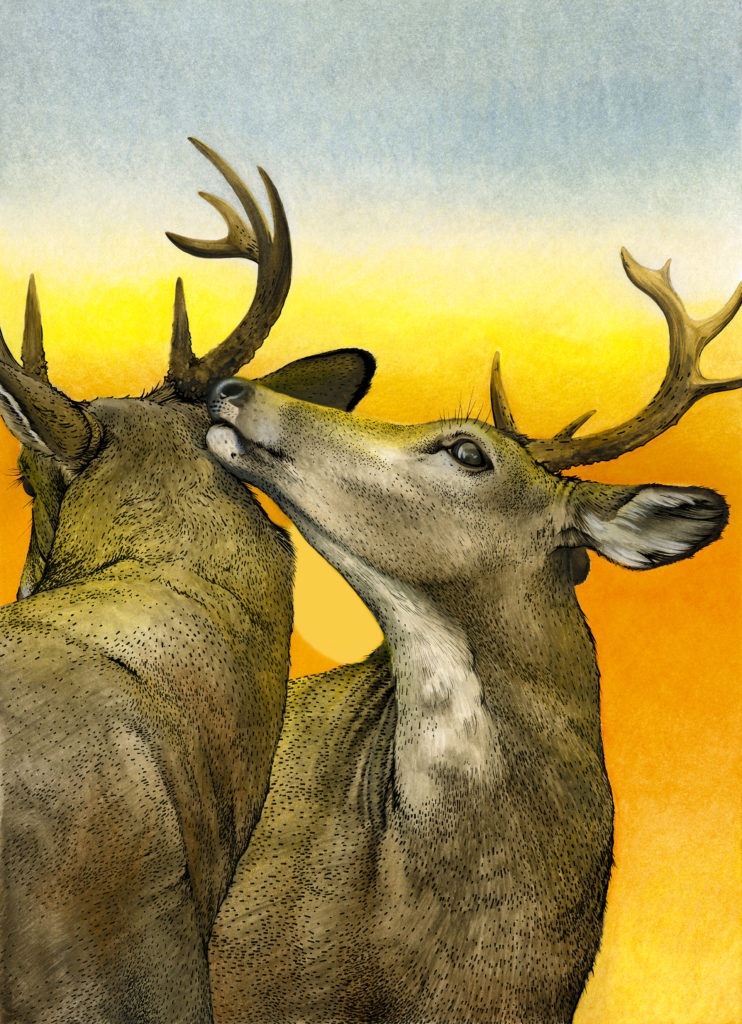
How did you get into large-scale mural work?
I’ve actually never done any large-scale mural work — other than a little patio fence mural at a bar in Milwaukee called D.I.X. — so this will be my first (actual?) mural. Most of my work is rather small scale, so I am equal parts ecstatic and terrified about the opportunity.
What’s your goal with your public artwork?
A lot of my work, in its most basic and very boiled down sense, is about creating representation and recontextualizing the everyday. Oftentimes I’m using the visual language of wildlife art to communicate queer narratives. Queerness is, oftentimes, absent from our understanding of nature. Something I love about birds is, while they are inevitably flamboyant, they also are known to engage in homosexual/queer relations, and I’m excited to share an alternative understanding of this incredible, natural world we live in. Hope y’all like magpies, but if you don’t, maybe you will.
What do you think public art does for a community?
I can’t imagine feeling comfortable in a world without it. You ever see a mural on the side of an old brick building and think, “That’s not doing it for me,” but you still feel so incredibly comfortable because it’s there? It’s sharing, it’s storytelling, it’s history, it’s color… only good things.
What artists do you have your eye on right now?
My favorite artists are almost always contemporary sculptors. Check out Zachary Betts (we went to the same undergrad!) and Jes Fan. Also, I will never be able to stop thinking about Doron Langberg paintings and TM Davy’s pastel works.
Susan Dillon

How did you get into large-scale mural work?
I am one of the oddities among street artists… I don’t do murals! I do smaller scale fiber sculpture installations instead of the large murals most people associate with “street art.” I have been a practicing fiber and mixed media artist for 20 years, and was exploring three-dimensional fiber for some time. I figured out a way to make small fabric mushrooms using wire as support and thought it would be interesting to play with the concept of growth and decay using “natural” elements in urban settings. And so began the “Life Cycles” project. Now, I am creating colonial life-forms that spring up in the city; along the base of buildings, on telephone poles, cracks in the pavement, bridges and overpasses, etc.
What’s your goal with your public artwork?
First and foremost, I want to challenge what people perceive as “street art,” both in medium and scale. Secondly, I want people to think about the cyclical nature of the world around them, both on a smaller scale, like weeds growing in cracks in the pavement, setting seed then dying, as well as on a larger scale, such as cities and even societies growing, flourishing and (inevitably) collapsing. Finally, I am also exploring concepts of colonialism and gentrification with the colony structures.
What do you think public art does for a community?
I love how public art exposes people to the arts in general in a way that does not involve a third party (i.e., galleries, art dealers, etc). Just by walking the streets of your hometown, you can discover different styles, different mediums and different “messages” from artists. It is truly a way to get everyone involved in the arts!
Lio Bumbakini
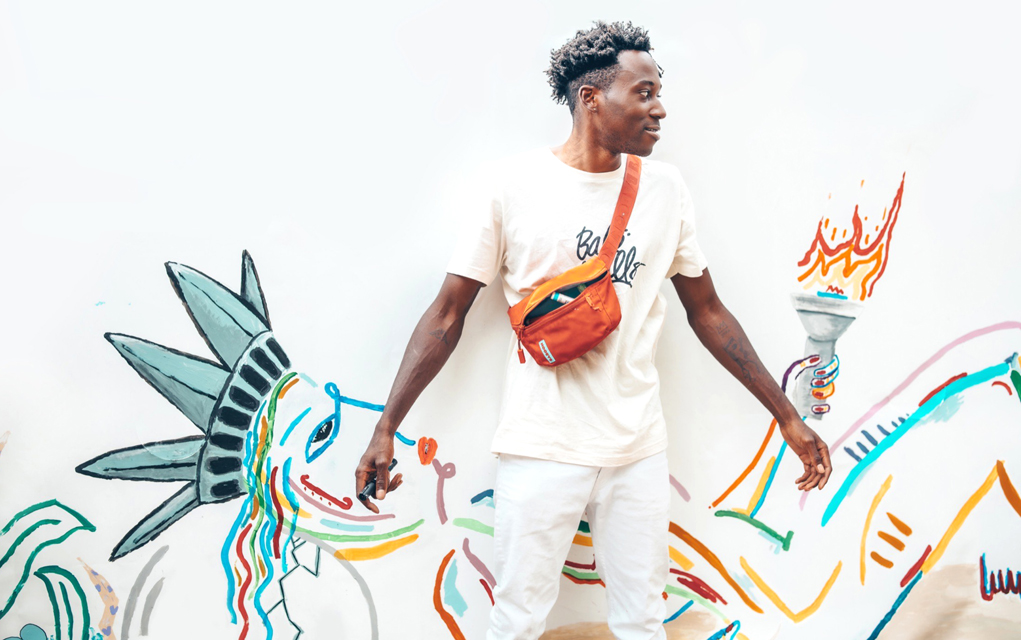
How did you get into large-scale mural work?
I grew up in Ixelles, which is the central urban commune/neighborhood of Brussels, Belgium. The streets there have always been littered in street art and graffiti. Artists like Créons, Bonhomme, BART and many others provided the backdrop of my childhood as I walked back and forth to school each day. Coming into the street scene, from a mostly fine-art based practice, I found that the possibility and reality of scale allowed for an experience that could not be replicated in a museum or gallery-context for the viewers. In the streets you’re able to interact with entire communities, on a daily basis, unhindered of the red-velvet rope or classist institutions that oversee the art world as we know it.
What’s your goal with your public artwork?
My goal with public art is to add color to the world and to stimulate dialogue around pertinent social issues and causes.
What do you think public art does for a community?
I think that it creates a sense of identity for residents, making their environments more interesting not only for them — but for tourists and visitors to the area. I think that public art has a huge economic impact, as it gives people more reasons to visit, and prolongs visits which in turn means more resources spread throughout the community.
What artists do you have your eye on right now?
Most of the artists I look up to are sadly dead but have made names that have survived the times such as Jean-Michel Basquiat, Renee Magritte, Keith Haring, Pilipili Mulongoy, Otto Mueller, Henri Matisse and Picasso just name a few really. I’m always on the lookout of anything Banksy makes, but in the quest to retain originality, I keep my venture into contemporary trends focused and limited.
A.J. Davis

Mural work is a process that allows artists to connect directly with the community to reflect on the history, culture, and environment of a given location. It is my goal to create work that inspires the community and raises awareness about local ecology whilst highlighting the beauty of native wildlife. My mural for Streetwise seeks to honor an education ambassador for the Rocky Mountain Raptor Program, Rough Legged Hawk. There are many artists around the world who continue to inspire the work I do, too many to list, but locally we have an amazing group of artists pushing the bar on contemporary mural and graffiti work including Anna Charney, Tuke, Dread and Amanda Wolf, to name a few.
Gabriel Sanchez

How did you get into large-scale mural work?
As an oil painting portrait artist, working on large scale murals is just an expansion of the canvas.
What’s your goal with your public artwork?
My work talks about people and community, showing the humanity in my subjects allows the
audience to really see the person for who they are.
What do you think public art does for a community?
I think public art is the beauty that is missing in modern day urban design and architecture. Adding public art to an empty wall enlivens the spirit of whoever is in the area and creates a positive externality.
What artists do you have your eye on right now?
I enjoy the works of Christian Rex Van Minnen, Alex Katz, and Kehinde Wiley.
Jwlç Mendoza
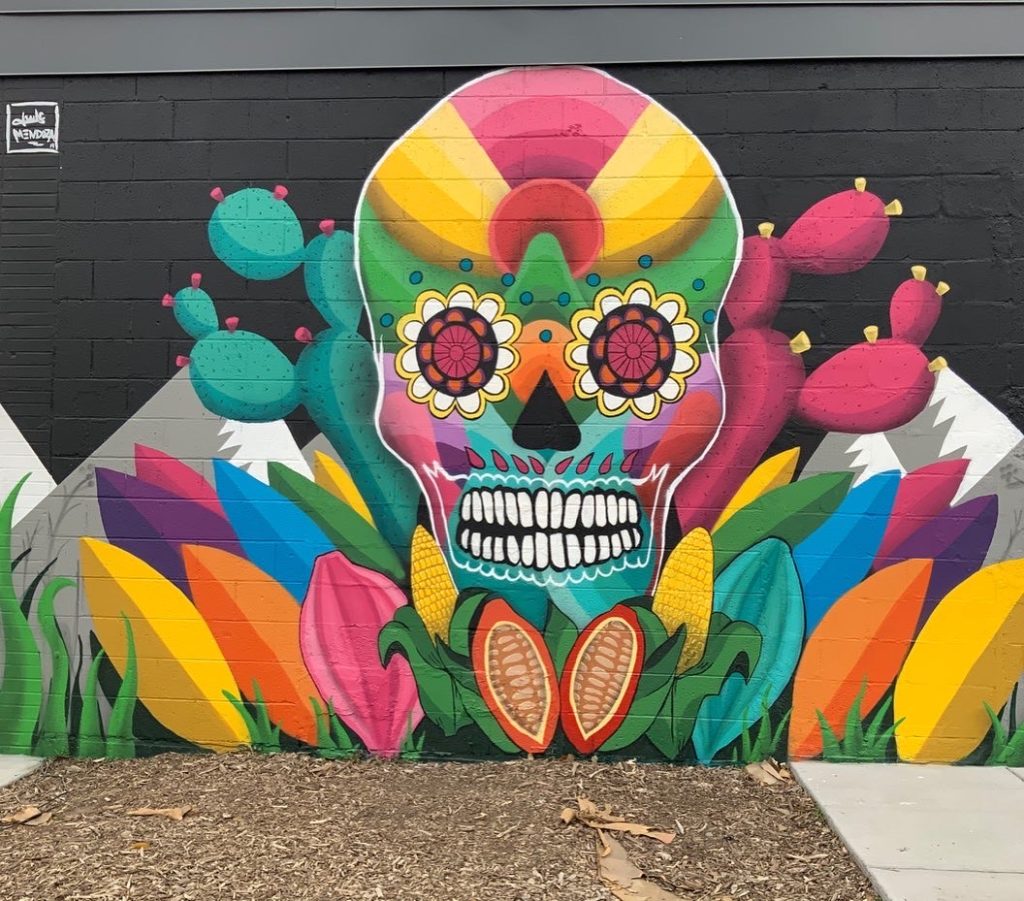
How did you get into large-scale mural work — what (or who) inspired you?
My interest in doing large scale murals has always been there but it was a little intimidating since I had a preference for working on really small canvases. It wasn’t until about three years ago that I decided that I wanted to see my work on a bigger scale and make a bigger impact with my artwork.
What’s your goal with your public artwork?
My goal when creating public artwork is to create a positive impact on those who take the time to look at the mural for even a few seconds. For me it is very important to consider the community surrounding the area where I’m painting because they are the ones who will be looking at the mural on the daily.
What do you think public art does for a community?
Public art can have a really powerful impact for the community in that area, therefore you have to be smart about what you’re painting in public areas. We as muralists have the power to be the voice of those who are silenced or misrepresented.
What artists do you have your eye on right now?
Locally the work that I admire the most is from GAMMA Gallery, Jolt, Detour and Armando Silva.
Ashley Joon

How did you get into large-scale mural work?
I didn’t think murals were within my reach until I was asked to do one by The Infinite Monkey’s FOCO location in 2019. I’m not sure why I was putting limits on myself, but I’m certainly glad I accepted the challenge. After my first mural, I was able to see the potential for art on any surface.
What’s your goal with your public artwork?
My goal in making public art is to artistically highlight women I’m inspired by and bring positive energy to a community’s surroundings. My expressive florals are uniquely mine, and I hope this encourages people to tap into their authentic voice and know that there is space for it in this world.
What do you think public art does for a community?
I think art is meant to inspire—inspire free thinking, change, and creativity. When art is available to a community, it helps spark free thought that may not otherwise be available. In this way, public art is kind of a service for a community.
What artists do you have your eye on right now?
Alyssa Mora, Alex Pangburn and Koko Bayer are all female artists I have my eye on and hope to collaborate with soon!
Jodie Herrera
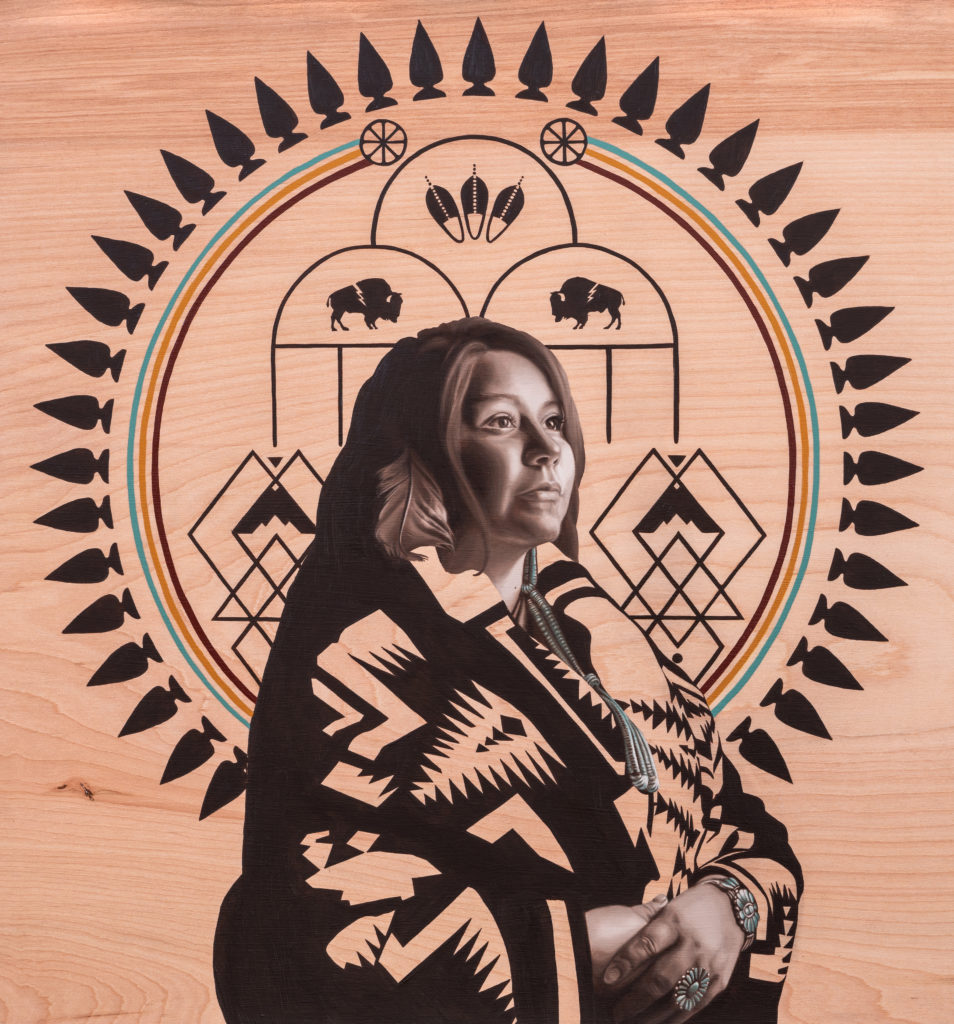
How did you get into large-scale mural work?
Actually my first unofficial mural was when I was a toddler. I always loved to draw and my parents where proud of it and allowed me to go nuts on a wall in our family home. Little did my parents know, they were a gateway into me becoming a vandal being that later, as a very young adult, I start doing Graffiti. That’s when I stated doing my art large scale, but technicaly I only went large when I got on productions or legal walls. I mainly did stencils, wheat paste and stuck to characters when I used spay paint. I never felt like a pro, It was just another way to express myself artistically and politically. I eased up on it after I got arrested in Oregon and after that I got really serious about oil painting. I started doing official murals because I was always just asked either because of my connection to the graph community or because a client liked my oil paintings but they had mural in mind. The people that honestly inspired me most were other other artists in and from my community.
What’s your goal with your public artwork?
My Murals are meant to reflect the culture, history or mission of the space in which they inhabit. They are also meant to create awareness around certain people of impact or social justice issues that are relevant to space and the time it’s created in.
What do you think public art does for a community?
Murals are for the people, no matter who the wall belongs to, when somebody from that community walks by it, they know it was made for them. Murals represents the community it’s in and it gives a sense of pride and Unity.
What artists do you have your eye on right now?
Too many to names to list and I honestly don’t want to hurt anyone’s feelings by leaving someone out! Just think every artist in Street Wise Cush mixed together plus Erin Carrier, Ernest Yerena, Indicline and always Audrey Kawasaki.
Giovannie “JUST” Dixon (aka Justin Spire)
How did you get into large-scale mural work — what (or who) inspired you?
I was actually living in Phoenix AZ back in 2017 in search of a visual art medium that would get me started on my art journey, when I came across a mural from a female artist from LA by the name of Sand One. And as I started looking at it I grew more and more intrigued and filled with curiosity on how artist use spray paint to create masterpieces. So literally the next morning I went out to buy some spray paint and start to experiment. I tried to paint a few things, realized how hard it was so long story short I decided to find artist who knew what they where doing and to surround myself with them and learn the tricks of the trade. And still til this day I try and surround myself with artist that are better then me, in many different areas. Any medium I’m curious about I essentially have this same process.
What’s your goal with your public artwork?
To teach people without them knowing they are being taught. And to create more black art for future generations.
What do you think public art does for a community?
It can do everything or it can do nothing at all I think it all depends on the community. I can only hope that my art creates healthy discussions towards real change in the world.
What artists do you have your eyes on right now?
That’s a long list but I would say: Listers, Helen Beard, Chenar, Dan Ktchener, Drew Merritt, Justin Bua, Logan Sylve, Joey Unlee, Telmo Miel, Rone, Leon Keer, Max Sansing, Thomas “Detour” Evans, Tristian Eaton, Collin San der Sluijs, Saturno, Belin… Just to name a few.
Johnny Draco (aka Johnny Miller)
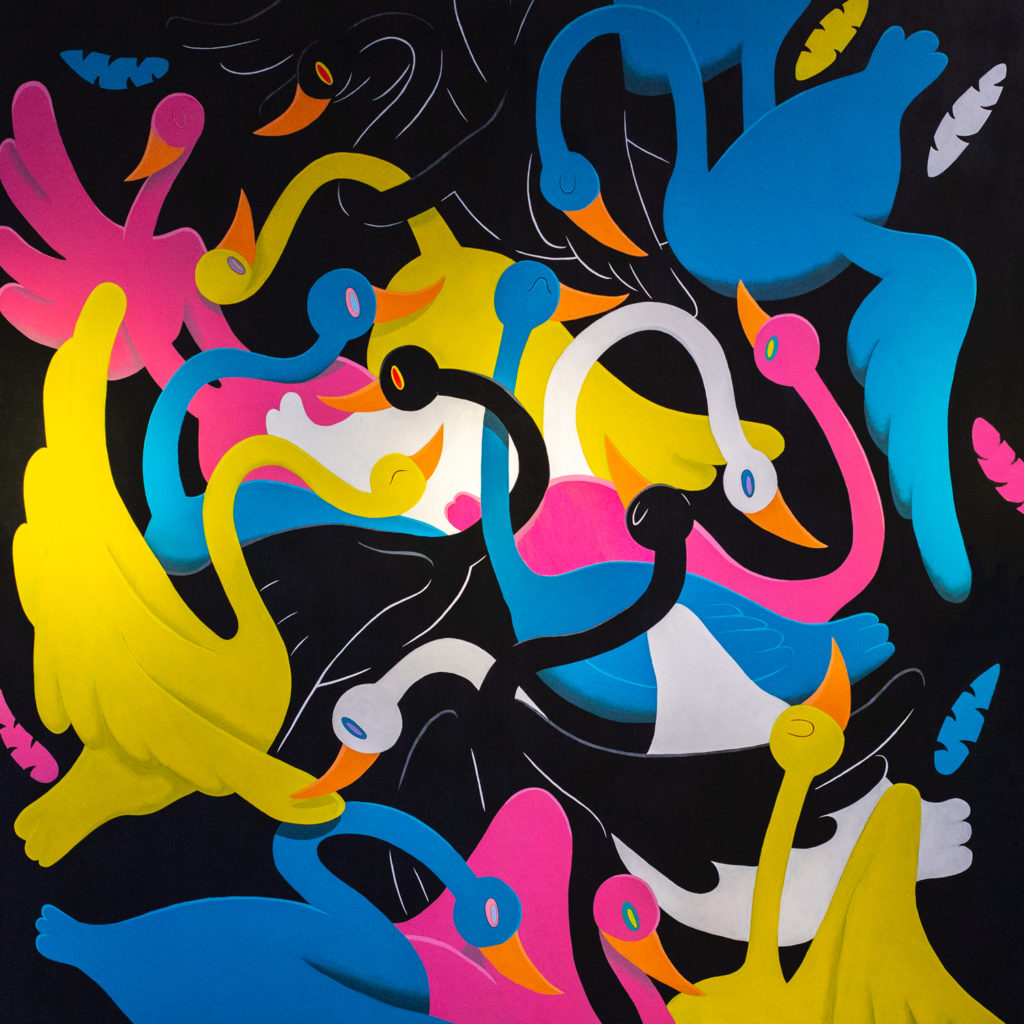
How did you get into large-scale mural work?
I first got into large scale mural work by interning at ABV Gallery. Under Greg Mike we assisted in creating his large scale pieces. I guess you could say that Shepard Fairey inspired me when it comes to large scale work. Watching documentaries like “Exit through the gift shop,” really made me dream of large scale works.
What’s your goal with your public artwork?
The main goal with my public art is to inspire, as well as call attention to issues that pertain to this world.
What do you think public art does for a community?
I believe public art has a various means of benefits to the community. For starters, public art can create atmosphere, or even culture. They are a means of bringing the community together, as well as creating a safe space for individuals to express themselves.
What artists do you have your eye on right now?
Right now I’m really watching James Jean. His art is on another level to me. He doesn’t have many public art, but nonetheless his art is magical.
Edica Pacha

How did you get into large-scale mural work?
I started doing street art in my early 20’s, putting photographs and stickers up for the public eye, and create art on the streets. About 5 years ago, I learned the large scale wheatpaste process from the photography mural team, Livin’ Large out of Sante Fe. Since then I have sone over 20 large scale murals and countless smaller 40″x60″ pieces.
What’s your goal with your public artwork?
My goal is to empower through images of women, and address issues such as indigenous injustice. I am interested in creating otherworldly art that speaks to the spiritual nature of our existence.
What do you think public art does for a community?
Public art is a opportunity to bring beauty and power to the streets. It reminds us to look into the questions and wonder of art. It carries forth a symbol of strength and allows the everyday viewer to participate in the art experience.
What artists do you have your eye on right now?
My favorite street artists are Cryptic and Swoon. Im also a big fan of milestoland. And I LOVE HERAKUT!!!
ON THE BILL: Street Wise Boulder. Sept. 7-13. RSVP for workshops and panel discussions, and to take a self-guided walking or biking tour of the murals, with QR codes available to learn more about the artists and stories behind the art. Please respect social distancing and wear a mask while touring artist installations. RSVPs are donation-based — give what you can.
Sept. 4 — Soft opening First Friday art at the Bus Stop Gallery in NoBo
Sept. 9 — Virtual Live Art and Activism panel hosted by Museum of Boulder
Sept. 7 and 12 — Womxn’s Spray Painting workshop with Grow Love (ages 13 and up)
Sept. 12 — Artist Reception and Exhibition at the NoBo Bus Stop Gallery
In the print version of this story we misspelled Leah Brenner Clack’s name. We have corrected it here.














